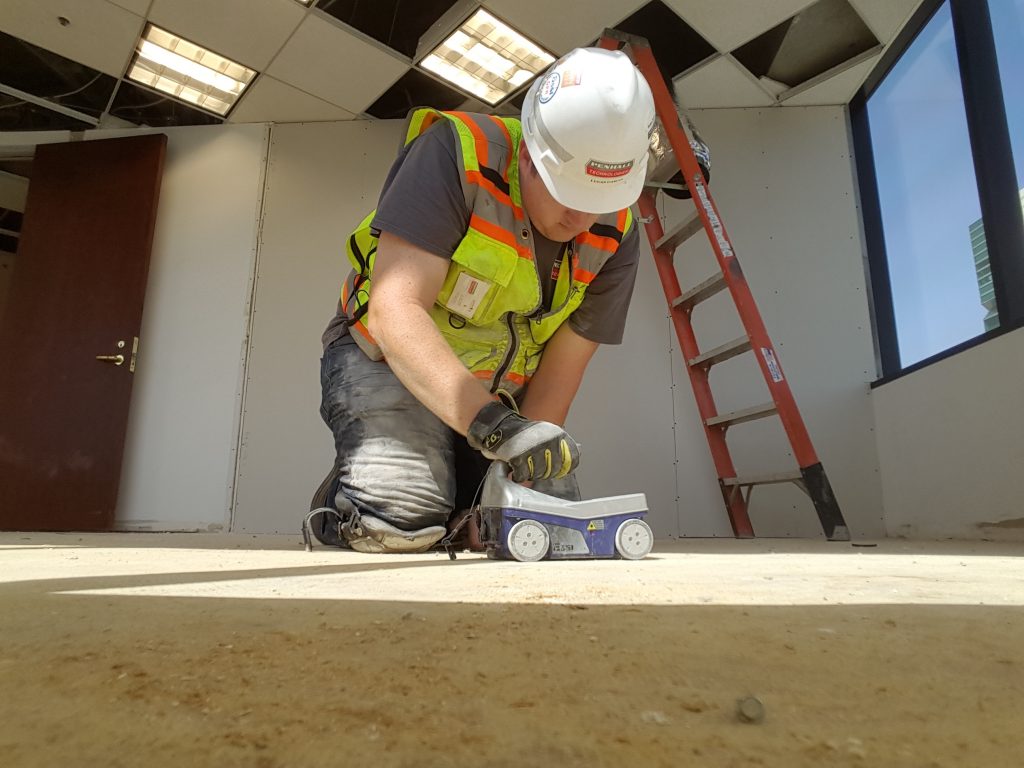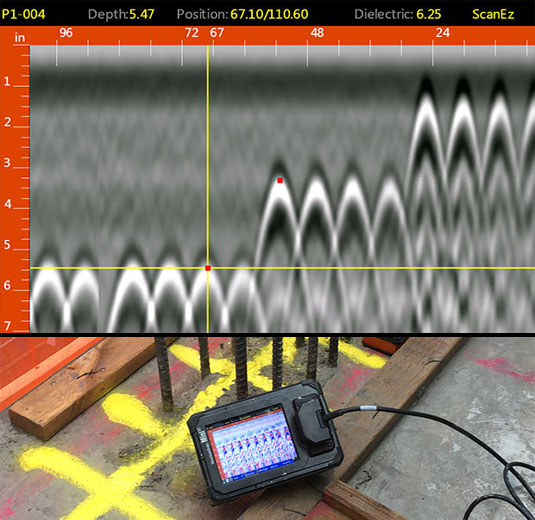The Importance of Specialist Concrete Scanning Solutions
The Importance of Specialist Concrete Scanning Solutions
Blog Article
Unveil the Transformative Power of Concrete Scanning in Making The Most Of Effectiveness and Security
Concrete scanning has actually arised as a crucial device in the construction sector, using exceptional advantages in enhancing job efficiency and making certain security standards. By using innovative innovation, concrete scanning allows experts to see past the surface, revealing surprise complexities that could affect the architectural honesty of a building. The transformative power of concrete scanning depends on its ability to provide comprehensive understandings and real-time data, transforming how projects are prepared and executed. As we look into the details of this cutting-edge technique, a world of possibilities opens, showcasing a new era of building methods that focus on accuracy and security.
Importance of Concrete Scanning
Making sure the structural honesty and safety and security of building projects starts with the vital step of carrying out complete concrete scanning. Concrete scanning is a non-destructive method used to spot and map subsurface aspects within concrete structures.
Furthermore, concrete scanning assists in optimizing task timelines and budget by avoiding unexpected costs and hold-ups that might arise due to unpredicted obstructions within the concrete. Eventually, investing in thorough concrete scanning is a positive approach that improves both efficiency and security in building and construction tasks.
Exactly How Concrete Scanning Works
Concrete scanning operates as a crucial tool in building and construction tasks by employing innovative innovations to detect and map subsurface aspects without causing architectural damages. Ground Permeating Radar (GPR) and Electromagnetic Induction (EMI) are 2 primary methods used in concrete scanning. GPR works by discharging high-frequency radar pulses right into the surface area, which recover when they experience subsurface items or gaps. The moment considered the signal to return indicates the depth and location of the items. EMI, on the other hand, uses magnetic fields to recognize variances in product make-ups, such as determining rebar or conduits within concrete structures.
Throughout the scanning process, the information gathered is analyzed in real-time, enabling instant recognition of prospective dangers or obstacles below the surface area. This info help in decision-making, making certain that building tasks proceed safely and effectively. In addition, 3D imaging software program can be used to develop topographic maps of the subsurface elements, additionally enhancing job preparation and implementation. By employing these advanced technologies, concrete scanning significantly reduces the risk of expensive damages and injuries on building and construction sites.
Advantages of Concrete Scanning
One of the main advantages of concrete scanning is the capacity to find and find ingrained objects find out such as rebar, post-tension cable televisions, and conduits accurately. Concrete scanning aids in planning and creating much more efficiently, as it supplies precise info concerning the location and depth of architectural parts.

Case Researches: Concrete Scanning Success

In another situation, a construction firm made use of 3D concrete scanning to analyze the problem old concrete structures in a historical building. The detailed scans provided useful insights right into the level of read what he said damage and helped focus on maintenance efforts successfully. By proactively attending to locations of concern identified with scanning, the business was able to prolong the life expectancy of the framework and ensure passenger safety.
These study highlight the transformative power of concrete scanning in improving effectiveness, accuracy, and safety and security in construction tasks.
Executing Concrete Scanning in Projects
Implementing advanced scanning innovations throughout building tasks has actually ended up being increasingly crucial for enhancing accuracy and safety and security. By integrating concrete scanning into job planning and implementation, building and construction groups can identify potential risks, such as rebar or post-tension cable televisions, hidden within concrete frameworks. This proactive strategy reduces the threat of accidents, delays, and pricey rework, eventually resulting in a lot more efficient task timelines and budgets.
To implement concrete scanning properly, task supervisors must team up carefully with knowledgeable scanning experts to determine one of the most suitable scanning techniques for the certain task needs. Involving scanning professionals from the onset of a job makes it possible for the group to produce thorough scanning strategies that address crucial areas of issue and make certain complete information collection.
Moreover, including concrete scanning right into normal project operations can improve decision-making processes, as real-time scan data offers prompt insights into the problem of concrete frameworks - Concrete Scanning. This data-driven strategy facilitates informed analytic and allows groups to make changes immediately, promoting a society of effectiveness and safety throughout the project lifecycle

Conclusion
In conclusion, concrete scanning plays a critical function in boosting effectiveness and safety in construction projects. By using sophisticated technology to detect and map out underlying frameworks within concrete, this process assists to stop expensive blunders, make certain architectural honesty, and reduce threats on site. With the capacity to reveal surprise elements and supply precise data, concrete scanning confirms to be a useful device for maximizing task end results and maximizing total success.
Concrete scanning is a non-destructive approach utilized to detect and map subsurface aspects within concrete frameworks. Furthermore, concrete scanning assists in maximizing project timelines and budget by avoiding unanticipated prices and hold-ups that might arise due to unforeseen blockages within the concrete. One remarkable instance research involves a large remodelling project where concrete scanning played an essential role in ensuring task success.In another situation, a building company made use of 3D concrete scanning to examine the problem of aging concrete structures in a historic structure. By incorporating concrete scanning into project planning and execution, building groups can recognize potential hazards, such as rebar or post-tension cables, hidden within concrete structures.
Report this page